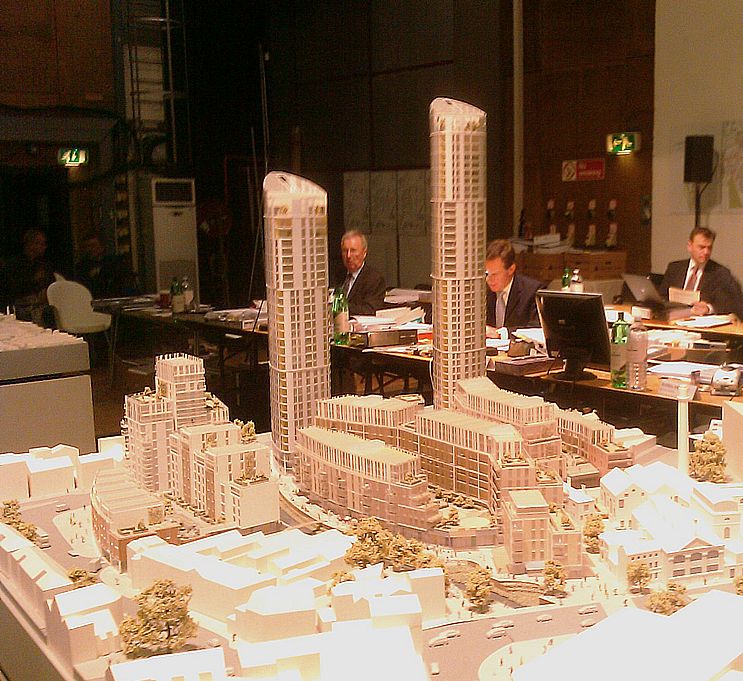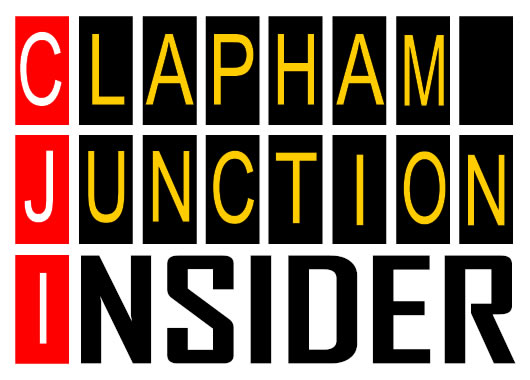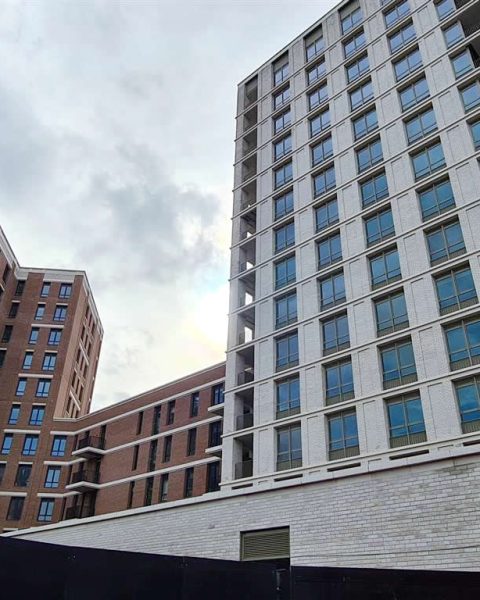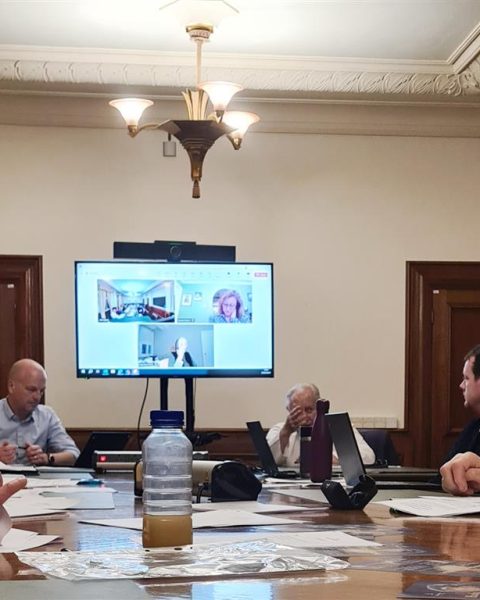Decades of promises to remove Wandsworth’s hostile one-way traffic system have come to nothing, with Transport for London quietly scrapping long-awaited plans, leaving millions in developer contributions unused in Mayor Sadiq Khan’s own borough and casting doubt over the council’s wider regeneration strategy.
The Wandsworth gyratory is a one‑way traffic system that channels vehicles around the town centre via key roads including Armoury Way, Swandon Way and the High Street, part of the South Circular and managed by Transport for London (TfL). For decades it has been condemned as a hostile, traffic‑choked barrier to regeneration, noisy and polluted, blamed for blighting the town centre and degrading the public realm.
In March 2022, the Council published a Framework for the future of Wandsworth Town centre. It said:
“The Council has worked closely with TfL on plans for the removal of the Wandsworth one-way system and the Council remains fully committed to its removal at the earliest opportunity. The removal of the Gyratory has long been considered as a key component in securing Wandsworth Town Centre’s regeneration. Without its removal the area would remain fragmented, and the Town Centre would not reach its full potential. It therefore forms an important part of the Wandsworth Town Area Strategy contained in the emerging Local Plan.”
At the time, John Locker, the cabinet member for strategic planning and transport, voiced open frustration. He pointed out that the council had already earmarked £27 million from developer contributions more than a decade earlier to help fund the overhaul – money that has since sat unused. He said:
“The reason it remains unspent is because this project can only be carried out by Transport for London. All the road space in the one-way system is part of TfL’s strategic road network of ‘red routes’. To put it simply these roads all belong to TfL. The council has no legal powers or authority to make any changes.”
After years of stalemate, TfL has now confirmed it is abandoning the scheme. In contrast, the authority continues to pour millions in neighbouring boroughs to transforme Hammersmith’s road system and to improve Vauxhall Gyratory.
It’s a major blow for the Labour majority on Wandsworth Council, especially as Sadiq Khan, the Mayor of London who also lives in the borough and is from the same political party, oversees TfL. He sets the strategic direction and priorities for London’s transport network, with broad powers to shape its policies and implementation, and control over the organisation’s operations and decisions.
The Wandsworth Society said the cancellation was a bitter disappointment. It accused the council of downplaying the scale of the setback, pointing out that its entire regeneration strategy had been built around a gyratory redesign originally due to begin in 2017. The society called for stronger action, saying:
“We would like to see the council make crystal clear that the status quo is not sustainable.”
In an interview published by Southwark News, Helen Cansick, TfL’s Head of Healthy Streets Investment, told Charlotte Lillywhite – Local Democracy Reporter:
“After detailed discussions with the Department for Transport and Wandsworth Council we’ve decided not to go ahead with the original scheme due to the high construction costs and forecast increased travel times for buses and other road users on the major road network.
We continue to work closely with Wandsworth Council on options to improve Wandsworth town centre, aiming to create a place that works for all residents, businesses and visitors. We’re working on proposals that will improve cycling and walking infrastructure, buses and safety in the local area and will share these in due course.”
However, it appears that the so-called “options” now involve requesting developers to fund improvements to the transport system if they want to secure planning permission. In the 2 Armoury Way proposal ( two buildings up to 10-storeys high on the south of the Gas Works site for student accommodation) that was approved on Wednesday 20th August by seven votes to two, the council is expecting developers to “significantly enhance the overall pedestrian experience, providing a more welcoming environment as it faces two major roads.”

As part of the deal, developers must contribute £47,600 towards a TfL-led highway improvement scheme, covering resurfacing, landscaping and safer walking and cycling routes. They are also required to enter a Section 278 agreement with TfL to fund and deliver further alterations to the carriageway.
But abandoning the gyratory change means also that all the land on the Ram Brewery site that was ring-fenced for that project are now free for development and the 15-year building ban that was imposed in 2013 (s106 agreement 6/12/2013) should immediately cease to have effect.
A long‑running saga
The long‑running battle over Wandsworth’s one‑way traffic system has defined planning and development in the town centre for nearly two decades. By prioritising the movement of vehicles over people, the scheme has left the centre fragmented, polluted and hostile to pedestrians and cyclists.
From the outset, diverting through‑traffic and dismantling the gyratory has been a stated policy goal, embedded in the London Plan and even flagged in the Mayor’s emerging Transport Strategy as far back as 2009. When Minerva first brought forward the Ram Brewery scheme in 2008, the Council seized upon it as the opportunity to fund the long‑mooted overhaul.
The original scheme promised 32% affordable housing, but this figure fell dramatically to just 11% after negotiations with planning officers. The justification was that “exceptional circumstances” could be claimed if developer contributions were diverted towards reshaping the gyratory instead. Access to the Brewery site required crossing multiple lanes of the one‑way system, and safe, pedestrian‑friendly crossings were seen as vital to integrating the scheme with the town centre.
In return for permission to build two towers of 32 and 42 storeys (reaching up to 145m or 475ft), Minerva pledged funding to help unblock Wandsworth’s infamous road system. But TfL immediately made clear that it would not contribute a single pound itself: any improvements to the gyratory would have to be secured entirely via a Section 106 agreement between the Council and the developer.
£38 million was eventually tabled as the price of the Council’s approval to turn Armoury Way back into a two‑way street and undo the gyratory first installed in 1969. That 1969 scheme had cost just £21,500 at the time – the equivalent of £195,775 in 2009 or £313,000 today, according to the Bank of England’s inflation calculator. Critics argued the deal showed how a vague pot of money, with no guarantees about delivery, was enough to sway the Council. Tony Belton, then Labour opposition leader (and now chair of the Council’s Planning Committee), warned at the time that development was being waved through on the back of promises that might never materialise.

During the subsequent public inquiry into the Brewery scheme, triggered after the Secretary of State called in the decision, TfL confirmed that although it would not fund the removal of the gyratory directly, it was prepared to meet a shortfall. But the Inspector found the justification problematic. The government’s report concluded that the supposed “exceptional circumstance” used to downgrade affordable housing in favour of funding transport improvements had in fact been added only later in the planning process – yet it was used by the Council as a major argument to approve the towers. The scheme was ultimately refused.
By 2011, a revised Brewery application re‑emerged, still 11% affordable accommodation only but this time with reduced transport contributions (£5,791,000 specifically for re-routing the gyratory system) and one 32‑storey tower. As we wrote at the time, the Council appeared to be at an impasse, as TfL did not regard the revamp of Wandsworth’s gyratory system as a priority.
Three years later, the site was sold to Chinese state‑owned developer Greenland Group. Council leader Ravi Govindia welcomed the purchase effusively, hailing it as a “vote of confidence” in the borough and once again linking the deal to long‑cherished hopes of finally removing the gyratory. But again, nothing happened.
By the 2020s, the pattern was becoming familiar. In 2021, the council’s in‑house magazine, Brightside, assured residents a redesign was “imminent”. Wandsworth Council confirmed it still held £27.5 million in reserve (planning forum meetings 22/02/2020 and 9/02/2022) – Section 106 and CIL money collected specifically for the gyratory project. By then, TfL’s own business plan had costed the scheme at £67 million, more than double the secured pot but the transport authority announced they would not be providing the funding.
Local societies urged the Council to at least deliver part of the redesign with the funds available, but no alternatives or scaled‑down options were pursued.
Meanwhile foreign investment had dried up. After a decade of heavy Chinese involvement in London property markets, Greenland scaled back, and the remaining Ram Brewery land was sold to the Berkeley Group in 2022 for around £40 million. The scheme included plans for a 36‑storey tower that remains unbuilt and mired in local controversy.
While broken promises mounted, major schemes in the town centre continued to be approved – each of them acknowledging in their paperwork that the gyratory was a significant local problem, yet none offering a meaningful solution.

What was once an industrial area of modest buildings and warehouse sheds is now being transformed into a dense cluster of ultra‑high‑rise housing.
In the space of a decade, the Council has approved schemes totalling more than 2,500 units across six major sites: the Ram Brewery (661 units, 2013); the South Thames College site (202, 2015); the Homebase/Swandon Lane site (385 in 2017, later increased to 462 in 2020); the B&Q site (517 in 2018, later increased to 632 in 2021); the Gas Works site (620, approved 2025); and 2 Armoury Way (434 student rooms).
Each application should have added weight to the urgent need for a new traffic system. Each secured millions in CIL and levy payments earmarked for infrastructure. Yet, despite this, the gyratory remains untouched.
The Wandsworth Society, in its formal objection to the Gas Works scheme, noted that no provision had been made for an additional pedestrian crossing of Armoury Way. The gyratory’s eastbound artery still forces residents to traverse four lanes of relentless one‑way traffic. No new bridges, no new routes, and no significant improvements to public transport have been delivered – despite the scale of construction and the millions accrued.
A consultation and detailed proposal made by TfL in 2015 and 2018
TfL acknowledged several problems with Wandsworth’s current road system: the gyratory created a car-dominated environment where wide roads encouraged speeding, particularly off-peak, whilst the one-way system forced drivers to take circuitous routes and proved difficult to navigate. Additionally, the existing bus stop arrangements were confusing for passengers.
From 2014 to mid-2018, TfL worked on a plan to overhaul Wandsworth town centre following detailed consultations between Transport for London, Wandsworth Council, local businesses and residents.
The proposals focused on the removal of the gyratory road system, with the aim of reducing the dominance of traffic on the High Street, improving pedestrian and cycling infrastructure , and supporting regeneration across the area.


One of the key elements was the near-complete removal of the one-way system around the town hall, with through traffic rerouted via Armoury Way, which would return to two-way operation. This would allow the High Street to become a more welcoming space, reserved for buses, Black Cabs, cyclists and local vehicles only, aimed at creating a better integrated town centre linking the new Ram Brewery development with the Southside shopping centre.

Proposals include safer, more direct pedestrian crossings at key junctions and an extension of Cycle Superhighway 8 through the town centre to promote greener travel. However, cycling groups criticised TfL’s plans, citing inadequate consideration of cyclists’ needs, poor connections with surrounding cycle routes, and a missed opportunity to improve links along the Wandle river track.
@TfLOfficial Where’s the bike lane?
— Sarah Sturrock (@SturrockSarah) October 31, 2014
TfL responded by highlighting the high traffic volumes as a key reason why certain roads were deemed unsuitable for shared cycling.
Consultation revealed broad local support, though concerns remain over increased rat running and changes to parking and loading. In response, TfL has pledged to continue reviewing operational details, with recent plans including the closure of part of Barchard Street to discourage non-local traffic and the introduction of additional parking bays.
Although work on the scheme was initially expected to begin in 2018, this was then pushed back to 2021. Following COVID, everything stalled, though TfL maintained that the proposals would deliver lasting benefits—improved air quality, safer streets, and a vibrant town centre that better serves residents, businesses and visitors alike.
Wandsworth masterplan consultation
What remains is a piecemeal approach, with regeneration increasingly dependent on private contributions tied to new developments, rather than the long-promised, publicly funded overhaul.
The council is now running a consultation on improving Wandsworth town centre, focusing on more modest, cosmetic changes rather than a broad revamp.
They want to hear from residents, businesses, and visitors about how the town centre could be made better. Drop-in events are planned for the autumn so people can share their views and learn more about the plans.
Wandsworth Council and TfL maintain they are working together on ideas to improve the town centre. Yet any comprehensive plan to tackle the long-standing problems of heavy traffic, pollution, and car-dominated environment—issues that has impacted the town centre for decades, damaged the conservation area, and made the streets unsafe and unwelcoming for pedestrians and cyclists—have quietly slipped away.
The Wandsworth Society, which has campaigned on the issue for more than half a century, said it was ready to engage with the process but stressed that transport must remain central to any improvements. It noted that it had first drawn up detailed proposals to abolish the gyratory in 1986, long before the council and TfL began to take the matter seriously.
The group welcomed the opportunity for fresh public input through the “Commonplace” platform and said it would attend the council’s drop-in sessions. But it warned that the town centre needed more than superficial changes, urging the council to be open about funding and timescales.
“We believe this is an opportunity to create a real centre for Wandsworth—attractive and accessible as a place to meet, shop and relax. But clearly, transport issues will again be pivotal to any improvements,” the society said.
As the Council embarks on its new masterplan, a pressing question remains: how will it use the many millions collected from developers—money justified at the time on the grounds that such contributions would outweigh the harms of overdevelopment—to deliver the long-delayed transformation of the gyratory?
Wandsworth Council was contacted and declined to provide comment.

















